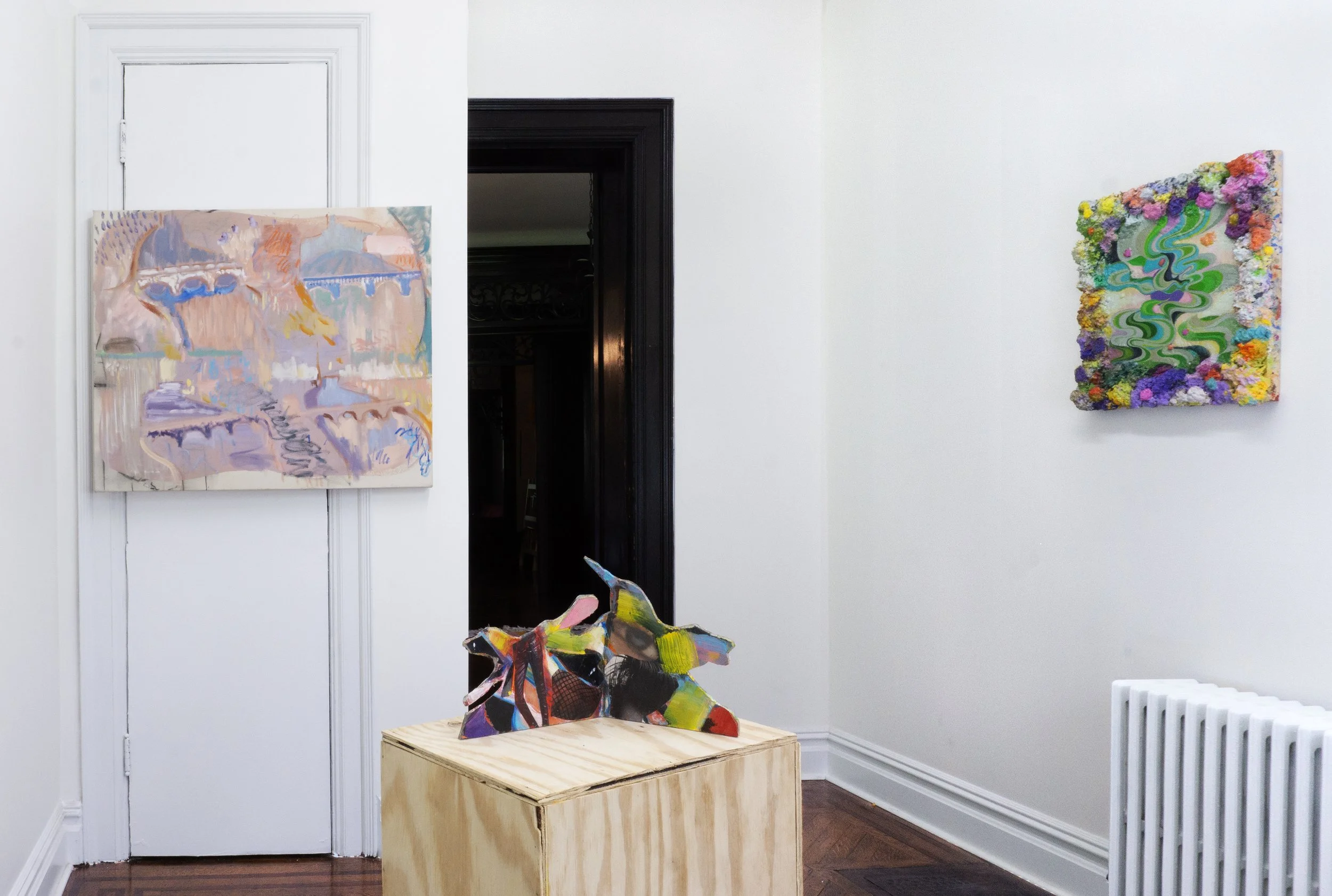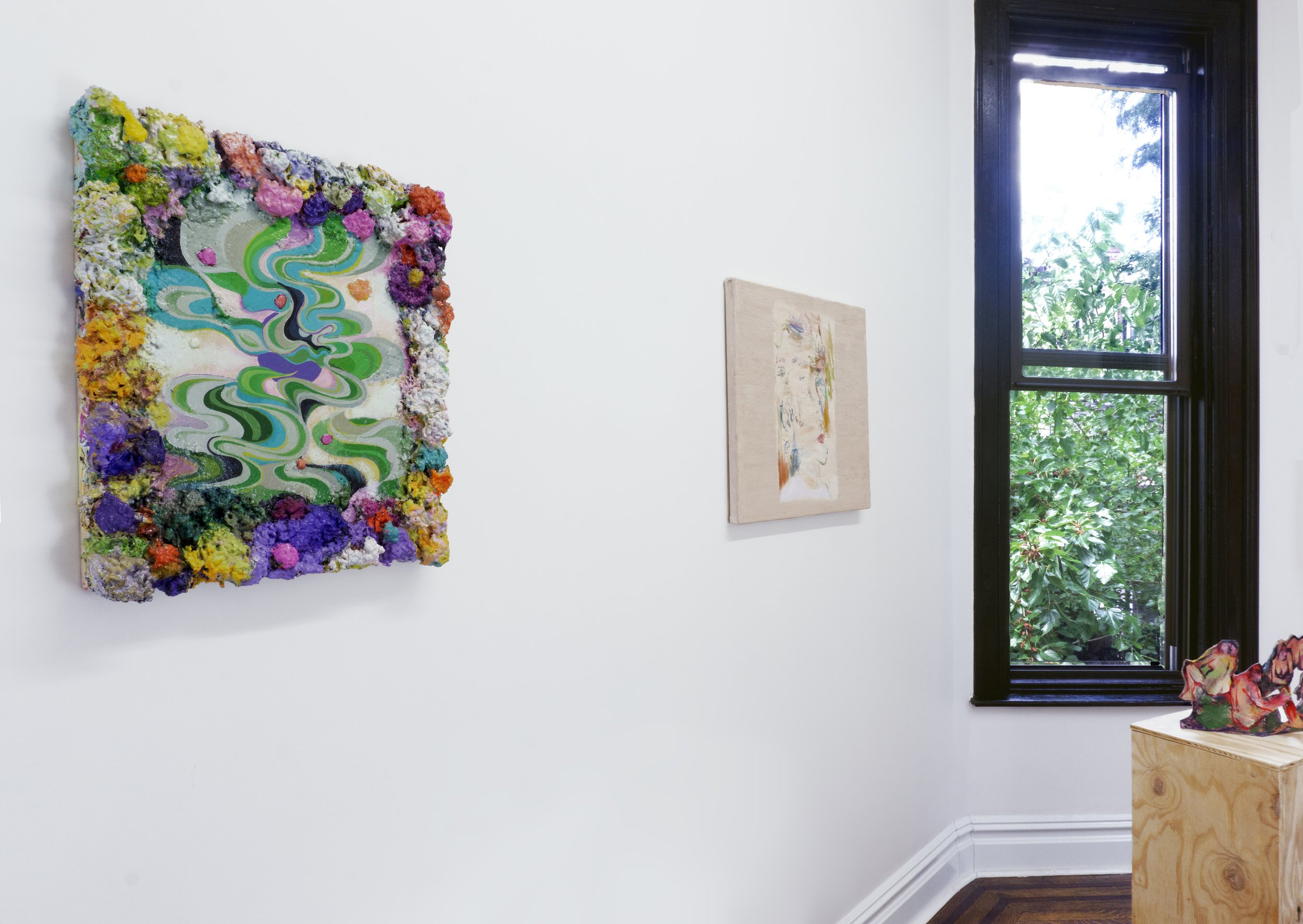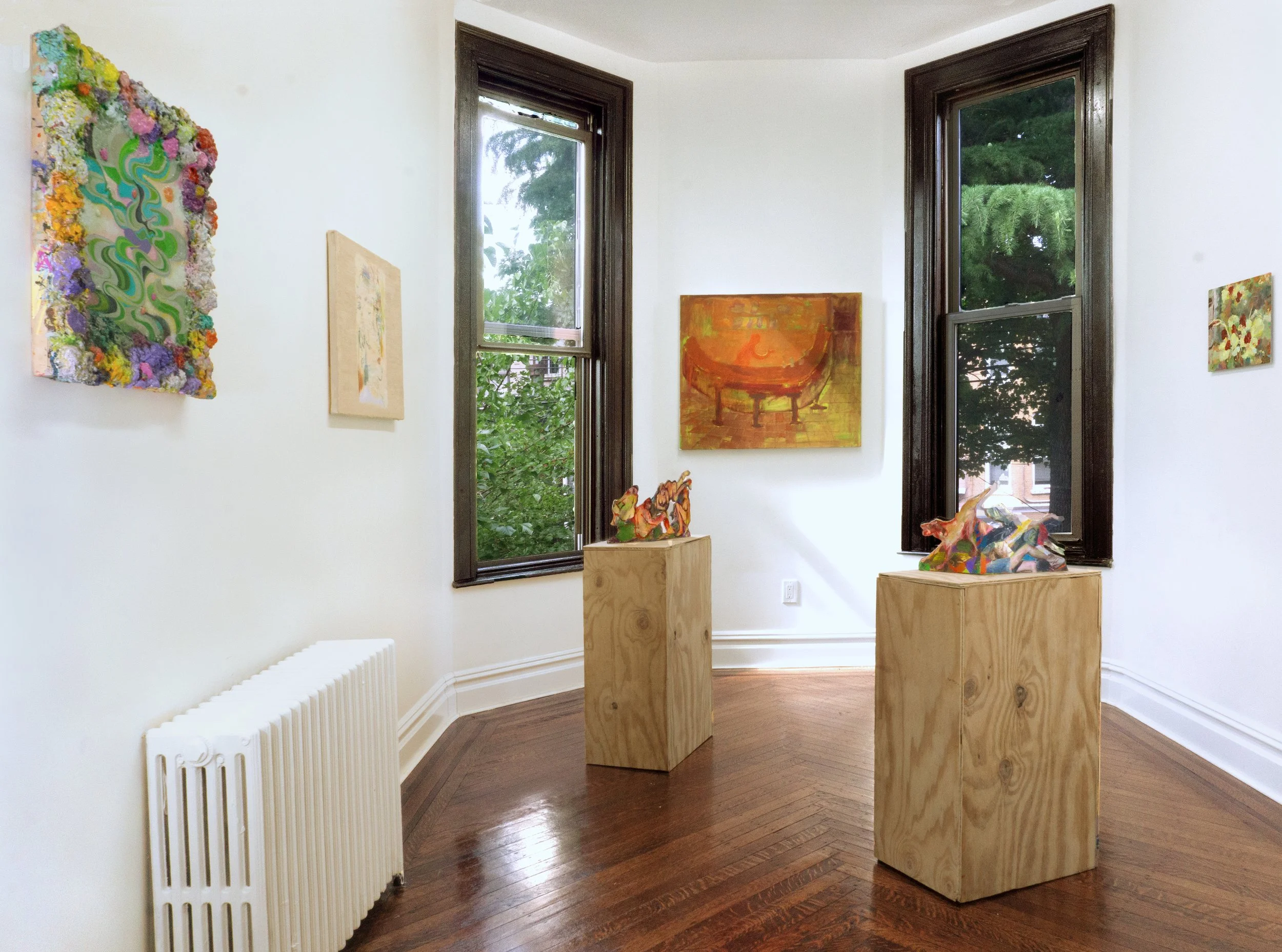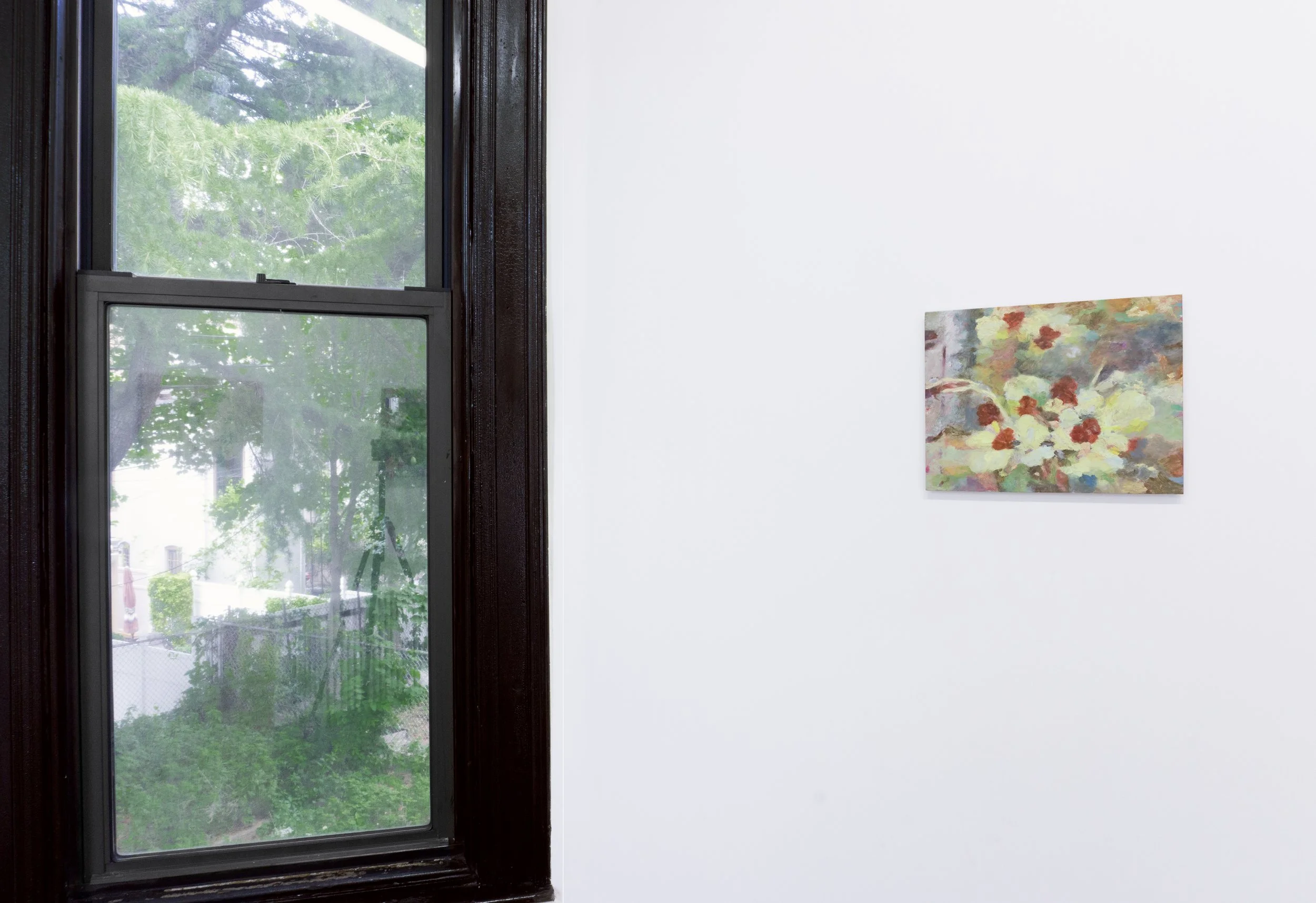The Good Intent
June 5 - Aug 11
Curated by Ryan Kish
Phillip Allen
✻
Joshua Armitage
✻
Zoë Carlon
✻
Dido Hallett
✻
Mark Jackson
✻
Ryan Kish
✻
Anne Ryan
✻
Phillip Allen ✻ Joshua Armitage ✻ Zoë Carlon ✻ Dido Hallett ✻ Mark Jackson ✻ Ryan Kish ✻ Anne Ryan ✻
Press Release
Guest Gallery is thrilled to present The Good Intent, the inaugural exhibition at 1451 Dean Street in Brooklyn. Opening June 5 and curated by Ryan Kish, the show brings together painters who primarily work in London: Phillip Allen, Joshua Armitage, Zoë Carlon, Dido Hallett, Mark Jackson, Ryan Kish, and Anne Ryan. An opening reception will be held at the gallery on Wednesday June 5, 6-8 PM.
Taken from the name of a pub where Kish would sometimes go with painter friends in London while attending the artist-led school Turps Banana, The Good Intent extends the artistic fellowship he found living and working abroad. These artists, working at different stages of their careers, forge deeply individual approaches to contemporary painting that share an uncomplacent relationship to image, a willingness to be guided by color, and a belief in the capacity of the painting surface to accommodate re-working, searching, and open-ended questioning through paint.
Phillip Allen (b. 1967, London) builds spiraling layers of oil paint that surround and enclose sensitively painted, kaleidoscopic forms evoking landscape, drawing, and the histories of abstract expressionism and pop art. Every bit as complex –– and elegant –– is an oil on aluminum painting by Zoë Carlon (b. 1993, Wakefield) that finds the artist challenging her habits of color and form, letting palette choices of bright magenta, viridian green, and fauve orange determine and boundary the image of a primula flower. Dido Hallett (b. 1969, Bath) also arrives at her image organically –– her forceful, wrestled surface is punctuated by the figure of a human foot –– indicative of the artist’s method of finding subject matter through the act of painting. Human and animal forms emerge from painted and collaged cutouts by Anne Ryan (b. 1964, Limerick, Ireland). At once sculpture and painting, these materially rich and surprising structures reference art historical tropes such as bathers and movements as wide reaching as dynamism, abstract expressionism, and cubism.
Other allusions to art and literature abound in the work of these artists. Taking Nabokov’s literary masterpiece as its inspiration, pale fire by Mark Jackson (b. 1976, Nottingham) is both a painting-within-a-painting and a copy of an earlier work. Although delicately painted –– “almost like a projection of a face on sand” the artist says –– the work shows Jackson’s propensity for re-working, the previous iterations of this image hidden invisibly behind the spare canvas. Four Bridges by Joshua Armitage (b. 1986, Dewsbury) meditates on Monet’s paintings of Waterloo bridge over the River Thames in London. In Armitage’s work, slow observation is also an act of invention, chiming with the paintings of Ryan Kish (b. 1983, Portsmouth, NH), who is guided by questions of place, observation, memory, color, and light, and a seeking quality that leads him to paint recurring motifs over time. His work, Rosie’s Bar, nods toward the pub as a meeting place.
The exhibition marks the first time many of these artists will be showing in New York, and is available through August 11 by appointment.
Curator’s Text
I begin with a trope of evening.
-Jesse Murry, Painting Is a Supreme Fiction
I can’t stand the rain.
-Bob Weir, The Grateful Dead
It has been almost one year since I saw the Piet Mondrian and Hilma af Klimt exhibition at the Tate Modern in London. I had been living in the UK since 2021 and working in a studio at the Turps studio Programme in South London. As much as I thought I knew the later work of Mondrian, I was struck by how much of his earlier landscape and figurative work spoke to a feeling in contemporary painting that revives nature as a subject.
The painter Andrea Medjesi said to me in my first year in London that historically landscape doesn’t inform British painting, but literature does. That’s a juicy idea for an American painter interested in landscape. But is this still the case? I’m reminded of the American painter Jesse Murry’s landscape paintings that have a Turneresque light and atmosphere. Painting was a kind of fiction for Murry.
In the city, thinking about nature has come to mean trying to be a so-called ethical consumer. I feel bad about buying another plastic bottle (pray that it is compostable), and am meant to feel good when I hear about a guy who picked up the gum wrapper and put it in the trash as he ran to catch his flight. Responsibility to the subject of nature binds the artists here in this show, whether that be an imagined figure or like the richly chromatic observational painting of flowers on a windowsill by Zoë Carlon.
Mondrian’s early works, particularly his trees and dune series, have a sensibility found in these artists: each artist is reifying an idea or feeling. Color is pure physicality, for instance in the work of Philip Allen’s art nouveau fish-tank swirls and globs of built-up oil paint. This work isn't merely a reflection of nature but a willingness to be part of it, even if that means living with the detritus we've left on the landscape. Color is an energetic force in Anne Ryan’s heap of collaged and painted figures. There is a nod to Cezanne’s bathers in 3-D. This work is off the wall and looks like a lot of fun. Mark Jackson’s painting could be a mirror to one of those figures, made of solid air.
An observational painter can show you nature or create awareness of conservation through close, sensitive looking. An abstract painter can subvert tradition in an attempt to reset how we interact with space, formally and socially.
But the artists included in this show aren't working between abstraction and figuration, as it’s commonly talked about in American painting. Rather, they work from the gut, letting their materials dictate the course of the painting. They share a curiosity about color and flirt with an experience of nature, possessing a certain toughness you find among poets who live in the city. Like a poem, it’s ok to make stuff up from sensations or memories. That’s nature too.
Mondrian was making work on the eve of World War I under the influence of cubism. Rudolf Steiner’s theosophy was in the mix. We are in a time of a different crisis. Days are warmer. The bridge over the river in Joshua Armitage’s work might have cracks and it might be collapsing. As in Dido Hallett’s Untitled, a foot stomps over the dump, moving onwards to the next painting.
-Ryan Kish, May 2024








